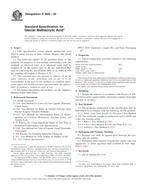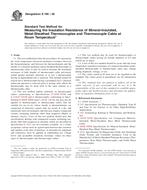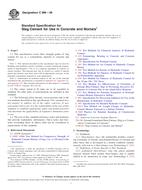1.1 This practice covers procedures for making and using U-bend specimens for the evaluation of stress-corrosion cracking in metals. The U-bend specimen is generally a rectangular strip which is bent 180° around a predetermined radius and maintained in this constant strain condition during the stress-corrosion test. Bends slightly less than or greater than 180° are sometimes used. Typical U-bend configurations showing several different methods of maintaining the applied stress are shown in Fig. 1.
1.2 U-bend specimens usually contain both elastic and plastic strain. In some cases (for example, very thin sheet or small diameter wire) it is possible to form a U-bend and produce only elastic strain. However, bent-beam (Practice G 39 or direct tension (Practice G 49)) specimens are normally used to study stress-corrosion cracking of strip or sheet under elastic strain only.
1.3 This practice is concerned only with the test specimen and not the environmental aspects of stress-corrosion testing which are discussed elsewhere (1) and in Practices G 35, G 36, G 37, G 41, G 44, G 103 and Test Method G 123.
1.4 The values stated in SI units are to be regarded as standard. The inch-pound units in parentheses are provided for information.
1.5 This standard does not purport to address all of the safety concerns, if any, associated with its use. It is the responsibility of the user of this standard to establish appropriate safety and health practices and determine the applicability of regulatory limitations prior to use.

FIG. 1 Typical Stressed U-bends
Product Details
- Published:
- 05/01/2009
- Number of Pages:
- 7
- File Size:
- 1 file , 130 KB


